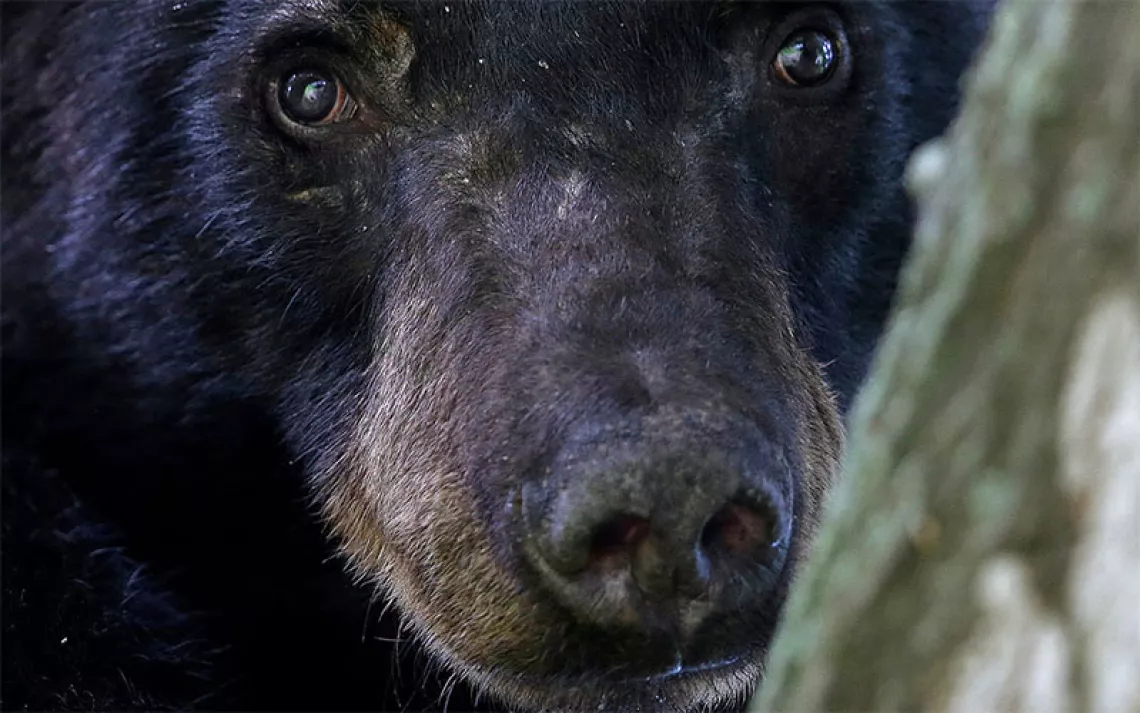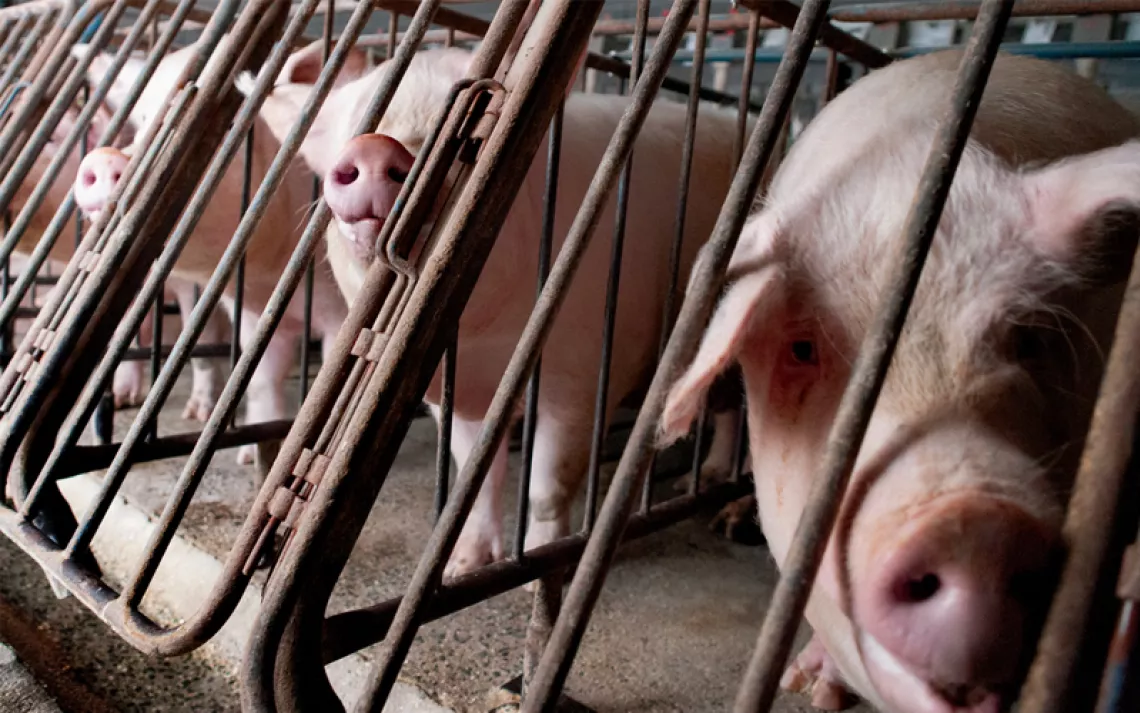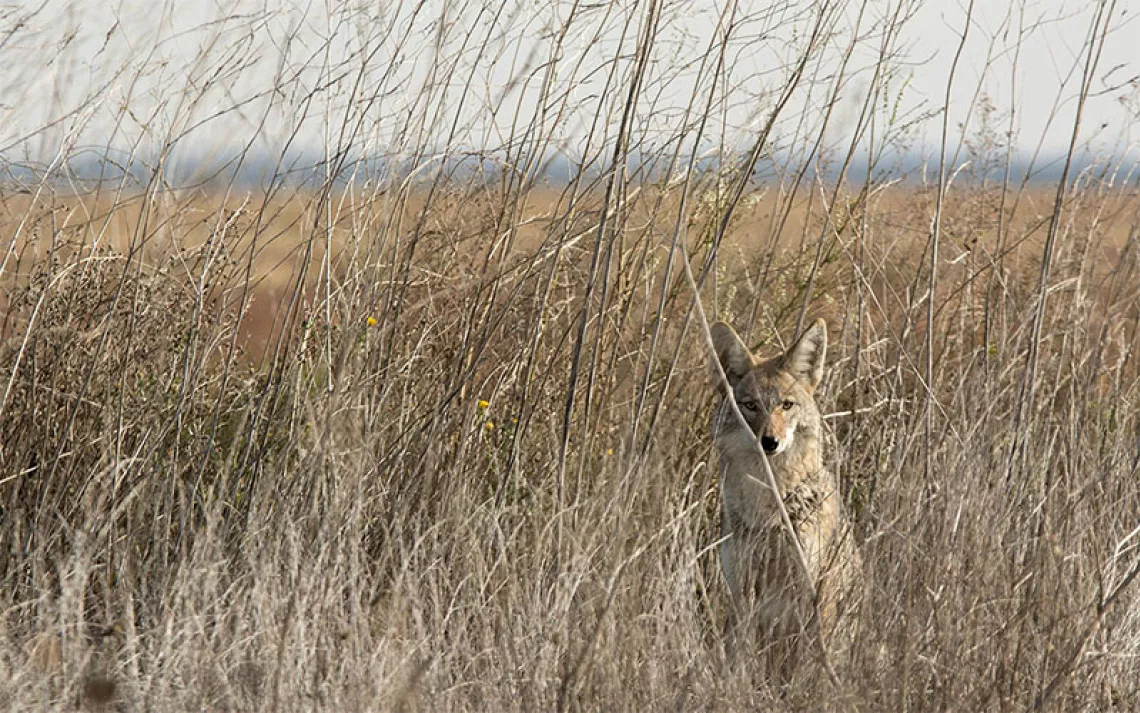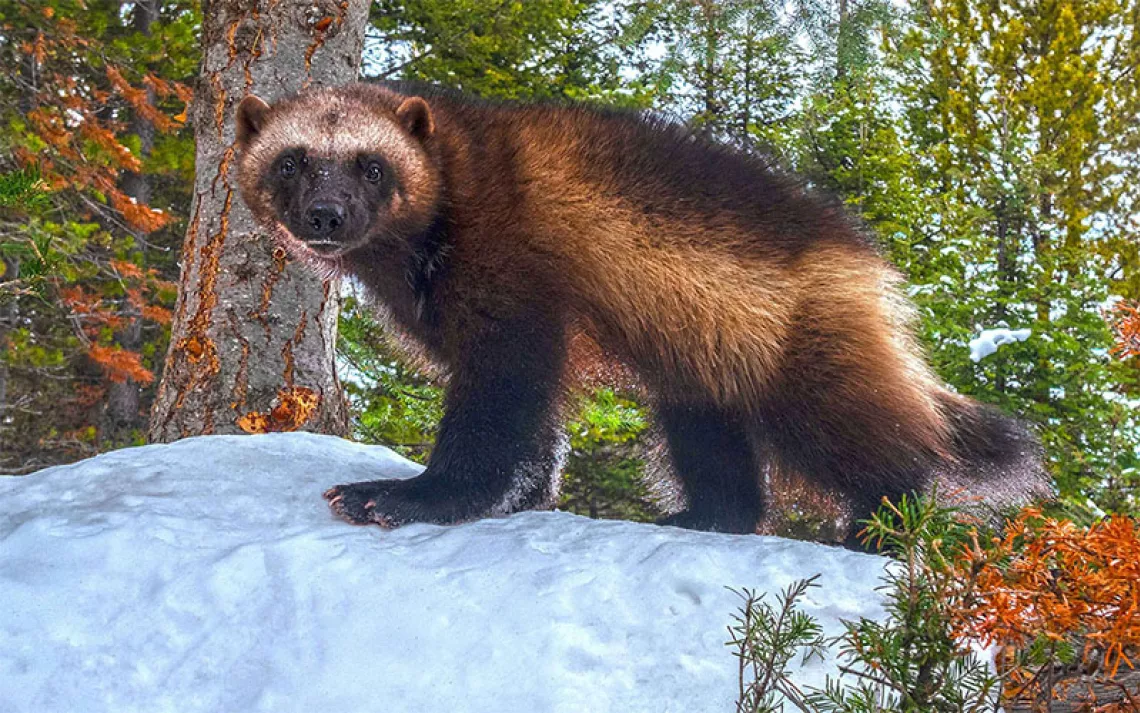Can Conservation Be Compassionate?
Animal welfare and conservation are often at odds. But some scientists think they can find common ground.
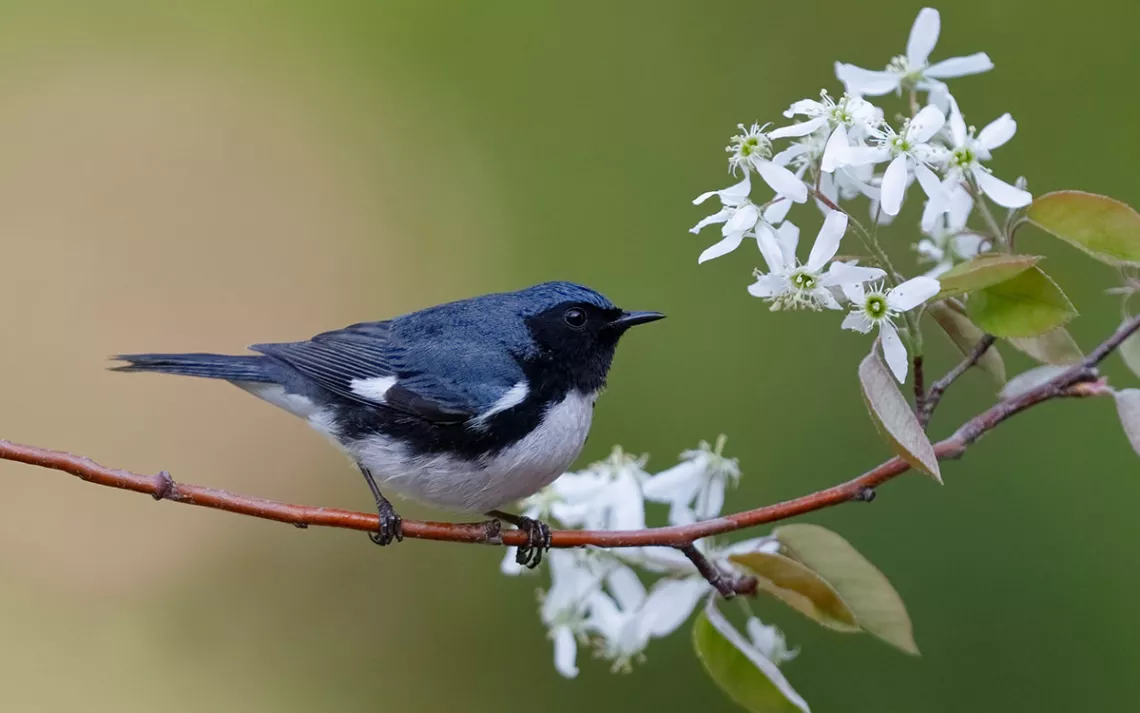
Photo by BrianLasenby/iStock
In 2004, ecologist Scott Sillett and a team of researchers set out to determine how the mating behavior of black-throated blue warblers, a common North American bird, changed depending on how many neighbors the birds had. To create the conditions needed for the experiment, the team walked into a forest near Woodstock, New Hampshire, and shot between 60 to 120 warblers. The experiment determined that black-throated blue warblers with more neighbors reproduced less, knowledge that Sillet, head of the Smithsonian Migratory Bird Center, said was critical for the conservation of the warblers and other, similar species.
“If you want to understand how to conserve populations, you need to understand what causes them to grow and decline,” he said.
Killing animals in the name of conservation happens all the time. In Australia, the national government encourages the use of lethal methods on feral cats and European red foxes in order to save Australia’s native birds and mammals. In some states in the US, hunting and conservation are financially linked, with most conservation funding coming from hunting license fees and gun sales. Academic researchers trap, kill, and take blood and tissue samples from wild animals in the hopes of gathering new and useful information about how to conserve these creatures. “Conservation can be pretty callous at times,” said Michael Nelson, an environmental ethicist at Oregon State University.
Should it be that way?
Scientists have tried for years to square the goals of conservation with the ever-more-accepted notion that many animals are sentient, feel pain, and deserve not to suffer. Recently, those efforts have crystallized, as a small group of scientists has started to reject the idea that conservation and animal welfare are actually at odds. But much of the scientific community is unsure that the idea—dubbed “compassionate conservation”—can be practically applied.
Caring for ecosystems, caring for animals
The priorities of conservation biology were first laid out by an ecologist named Michael Soulé, whose 1985 foundational paper cemented the purpose of the discipline as protecting ecosystems. “Although disease and suffering in animals are unpleasant and, perhaps, regrettable, biologists recognize that conservation is engaged in the protection of the integrity and continuity of natural processes, not the welfare of individuals,” wrote Soulé.
Those concerned with animal welfare, on the other hand, are primarily worried about the pain and suffering inflicted on individual animals, not just species or ecosystems. As more research shows the cognitive abilities of animals, our shared understanding of moral concern for animals continues to expand to include not just mammals, but birds, fish, and possibly even insects.
Enter compassionate conservation. Backed by a growing group of scientists and philosophers, this new approach to conservation work asserts that using lethal methods to manage or study animals is often unjustifiable, and that scientists and land managers must prioritize methods that both maintain the health of ecosystems and prevent the suffering of individuals. “Ultimately, conservation is an ethical enterprise,” said Erick Lundgren, an ecologist at Aarhus University in Denmark. To Lundgren, that means scientists need to be very honest and clear about the ethical impacts of their work.
In the past, Lundgren’s work as a conservationist involved killing certain organisms to preserve others, a practice he now believes reinforces human exceptionalism and undermines the very goals of conservation. Finding a way to value both ecosystems and individuals at once is crucial for a broader cause of maintaining positive human-nature relationships, he said. “If these animals are just machines that we can kill willy-nilly, no matter how we feel, how do we expect people to actually treat them with dignity and concern?”
One of the clearest ways to apply compassionate conservation is in how land managers deal with introduced species or species that are not originally native to an ecosystem but now live there due to human intervention or climate change. Instead of killing the introduced animals, a compassionate approach would require land managers to first consider all of the other possible causes of a native species’ decline. “Many introduced species become common because we’re killing their predators with the other hand,” said Lundgren. For example, halting the killing of dingoes in Australia could help to control populations of feral cats and introduced foxes, which would in turn help out the animals killed by cats and foxes.
“That’s an ethical response that compassionate conservationists would advocate—to identify the ultimate driver of the conservation issue, and then focus on that,” he said. Intensive grazing of livestock is also a main cause of habitat destruction that could be targeted for potential compassionate solutions, he said. Fencing out introduced species to create safe havens for native animals is another potential nonlethal solution.
Spurring ecological chaos
Other scientists say it’s often impossible to find a solution that satisfies the goals of both conservation and animal welfare. “Compassionate conservation offers a really nice solution. But it's a simplification of how complex conservation is,” said Matt Hayward, a professor of environmental science at the University of Newcastle in Australia. “Tough decisions need to be made if we want to protect the rich biodiversity that we have still around on our planet, and that we want to leave our children.”
In one critique, Hayward and 34 other ecologists from around the world wrote that in nature, harm is inevitable, and outlawing lethal methods in conservation would allow for perhaps even more harm and suffering among wild animals. To Hayward, the concept of “doing no harm” isn’t appropriate in ecological settings. For example, in Australia, the choice to let feral cats and introduced foxes roam free potentially causes more harm to Australia’s ground-dwelling mammals and wild birds. According to Australia’s National Environmental Science Programme, feral cats kill millions of mammals, birds, and reptiles in Australia each day. “The benefit of killing that one [cat] vastly outweighs the costs,” said Hayward. “I’m willing to morally accept the cost of harming an animal, if it means that entire species get to stay alive.”
To Sillett, the ethical complexities of lethal methods in research, too, can be worth the scientific value of the knowledge gained. Sillett said if he were to go back in time and do his experiment on the warblers again, he probably wouldn’t change a thing. “I think that the work we did was ethical,” he said. “It’s important that we’re able to learn about how populations function. I do understand that many people see ethical challenges with that, and I think it’s a legitimate conversation.
Embracing emotion in science
To other environmental ethicists, such as Nelson, part of the goal of compassionate conservation is not to scold conservation biologists but to create a world where they’re given the tools and encouragement to confront the ethical implications of their work. Critics of the compassionate approach worry that it allows emotion to sway science to a detrimental degree. But denying that conservation is an emotional enterprise is denying a “pretty big part of our humanity, and has its own dangerous side effects,” Nelson said.
Oftentimes, conservation trade-offs don’t have a clear morally right or wrong answer, and the challenge facing scientists is how to deal with the grief associated with the conservation decisions one makes, he said. “Compassionate conservation isn’t necessarily about saying,‘We definitely can’t kill anything.’ It’s more about, ‘We have to confront how we feel about this,’” Nelson said. Scientists aren’t always good at doing that, and Nelson sees plenty of room for improvement, which could take the form of making space at academic conferences for scientists to talk to one another about the emotional and moral consequences of their work.
“Conservation is inherently like facing a trolley problem every day. There are certain trade-offs. But just because something's hard doesn't mean we shouldn't be doing it,” said Kristy Ferraro, a PhD candidate at the Yale School of the Environment who studies ecosystem ecology and writes on conservation ethics. Before considering the hardest cases of conservation ethics, there are lots of easier problems—”low-hanging fruit”—that scientists could probably find more compassionate solutions to, she said.
A paper published by Ferraro and others this year argued that conservation science has a lot to learn from studying the differences between individual animals. The authors write that recognizing that fact allows conservationists to ask better and more creative scientific questions. “By valuing individuals, we can learn more about them. We’re asking questions at a different unit of focus, which allows for a whole new body of knowledge to be discovered,” said Ferraro. “It’s going to make us do better science and make science better,” she said.
 The Magazine of The Sierra Club
The Magazine of The Sierra Club
